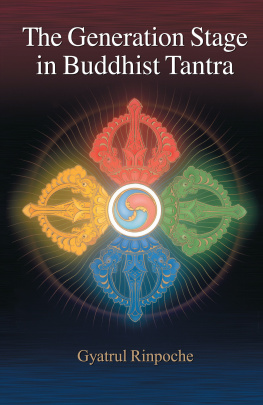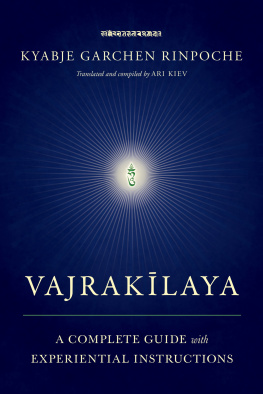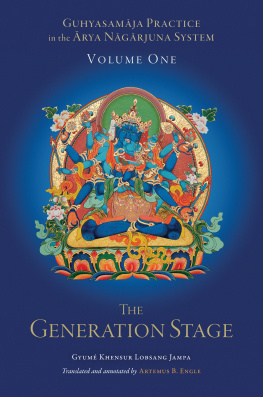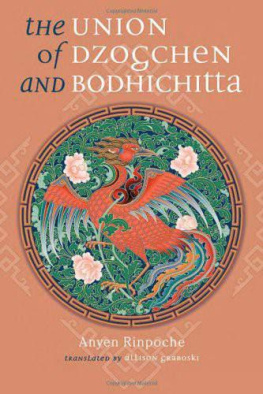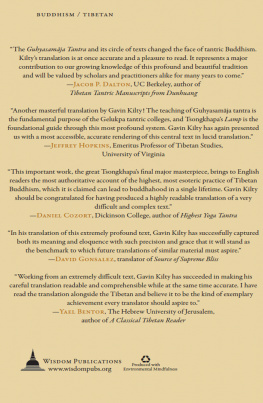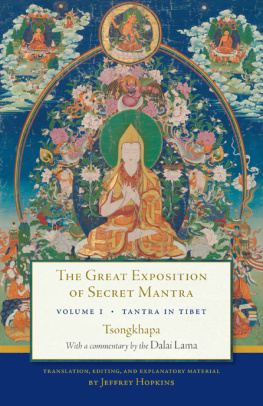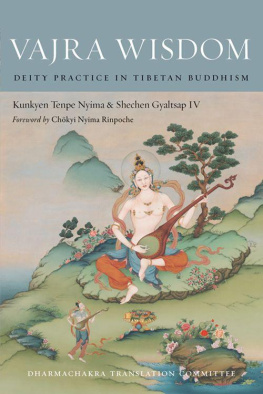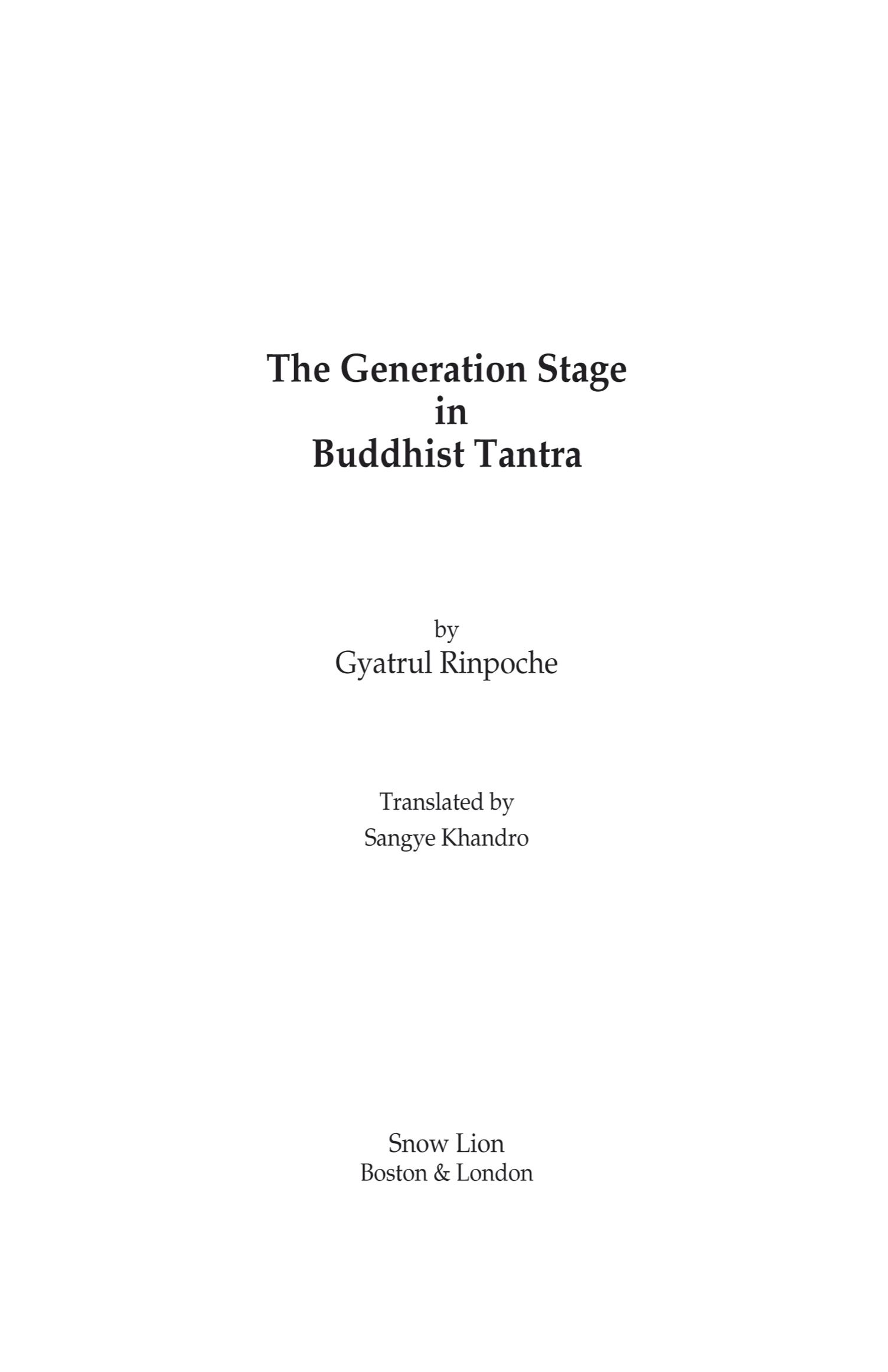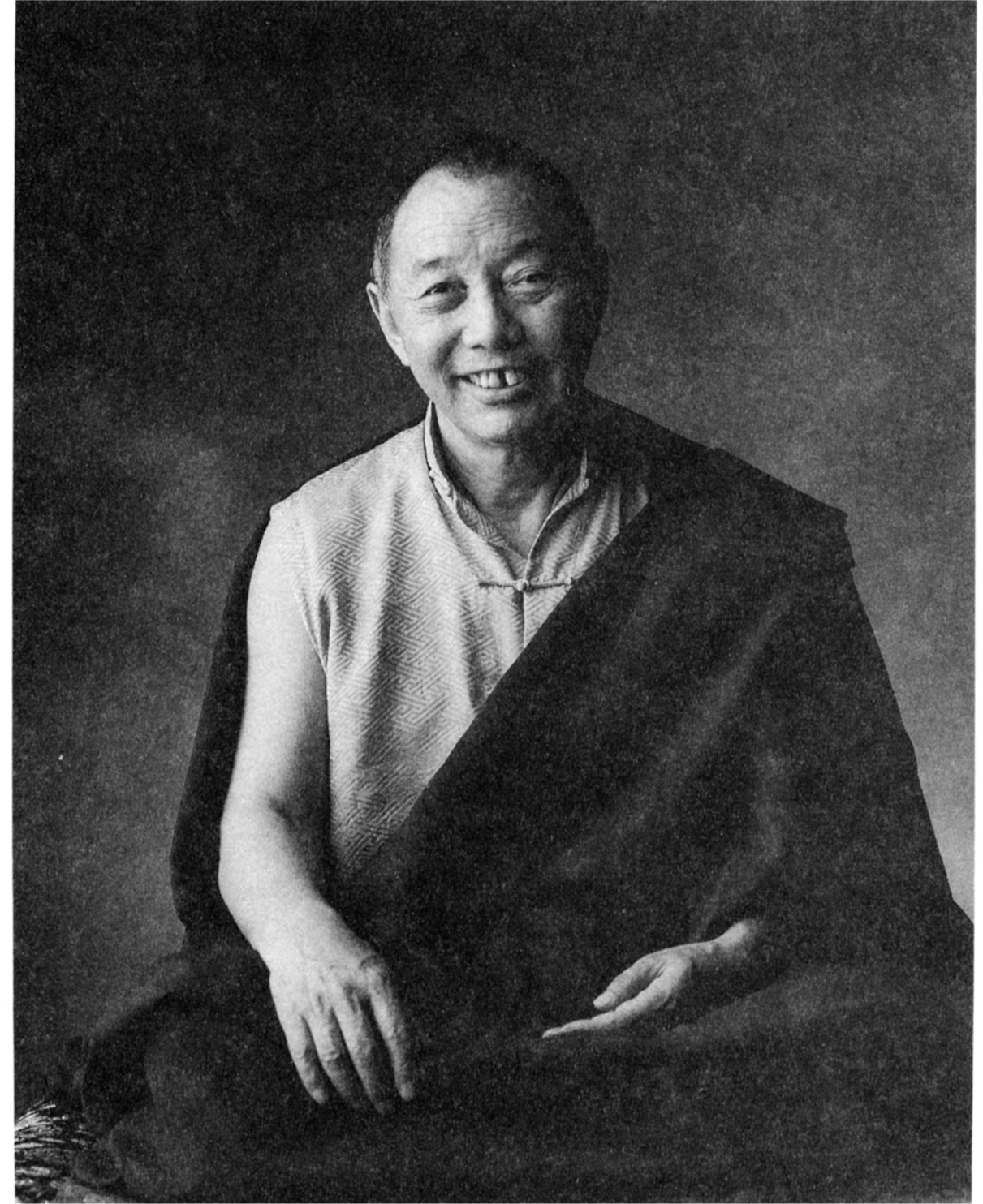A Brief Biography of Ven. Gyatrul Rinpoche
The Venerable Gyatrul Rinpoche was born in the year of the Wood Ox, 1925, in Szechuan Province, China. Born into a noble family, he spent a happy childhood with parents and family members for his first eight years. In his eighth year Rinpoche was formally discovered as the reincarnation of Gyatrul Rinpoche, taken to Dhomang Monastery (an important branch Payul Monastery), enthroned and placed under the strict care of his root guru Tulku Natsog Rangdrol and other tutors. Gyatrul Rinpoche was formally discovered by Dzongzar Khentsey Rinpoche who issued a statement detailing the young tulkus whereabouts, name of parents, place of birth and further particulars. This information was identical to the statement issued by Tulku Natsog Rangdrol.
Once enthroned at Dhomang Monastery, Rinpoche began many years of formal study and training. As a young man he maintained constant company with his root guru Tulku Natsog, spending many years with him in solitary retreat, moving from one isolated location to another. Rinpoche has studied under some of the greatest Nyingmapa mahasiddhas of this century and carries with him all the blessings and knowledge that he received directly from his teachers. Due to the onset of the Chinese invasion of Tibet, Rinpoche was told to flee his homeland, and his principal teachers even fore-told the details of his future work propagating the Dharma in foreign lands.
Tulku Natsog Rangdrol, who was one of the five emanations of Dudjom Rinpoche (that of concerned activity), stayed behind, explaining that it was his karma to remain. After one year of tremendous hardship on the road to freedom, Rinpoche, who originally departed with a crowd of 20,000, crossed over the Nepalese border to safety with only 200 survivors.
In the years that followed he worked in the service of H.H. the Dalai Lama as well as H.H. the Karmapa. Later, in 1972, H.H. the Dalai Lama and H.H. Dudjom Rinpoche chose Rinpoche as the Nyingmapa representative to accompany the first group of Tibetans to be sent to resettle in Canada. After arriving in the West, Rinpoche travelled extensively around the U.S.A. and Canada at the invitation of Tibetan and Western disciples alike. In 1976 Rinpoche was asked by H.H. Dudjom Rinpoche, during His Holiness second visit to the West, to be his spiritual representative. Rinpoche accepted this position out of devotion and, since that time, has maintained his loyal devotion to H.H. Dudjom Rinpoche by establishing many Yeshe Nyingpo centers in the U.S., including a beautiful retreat center in the Siskiyou mountain range near the border of California and Oregon. The site was consecrated by H.H. Dudjom Rinpoche and has hosted many great lamas as well as two wangchens (major lineage empowerments) given by H.H. Penor Rinpoche. The retreat center presently consists of 65 acres of isolated forest land and a four-story traditional temple. The temple is also the site of Rinpoches residence when he is in the U.S.A. Since 1984 Rinpoche has been making regular visits to the Republic of China, Taiwan, where he has hundreds of devoted disciples. His skillful ability to explain the Vajrayana path in simple terms and his unfailing humor and compassion are the noble qualities for which he is most loved.
Preface
This commentary on the generation stage, presented by the Venerable Gyatrul Rinpoche, is based on the well-known root text written by the famous Tulku of Kathog, Tsewang Chogdrub. The root text is entitled Kyed Pai Rim Pa Chog Dang Jar Wai Sal Ched Zung Jug Nyema She Chawa (bsKyed pai rim pa cho ga dang sbyar bai gsal byed zung jug nyi ma zhes bya wa), An Explanation of the Generation Stage in Conjunction with Sadhana Practice called A Stalk of Non-dual Clarity. Tulku Tsewang Chogdrub was a great scholar and became famous for his comprehensive explanations of the generation stage according to the Nyingma tradition. The root text is extremely concise, yet it includes all the essential information a disciple needs to proceed on the generation stage of practice.
The stages of generation are explained according to an understanding of the foundation of the purification, the cause for the purification, the purification and the result. In accordance with the view of the Great Perfection atiyoga, the foundation and result of the purification are inherently equal and identical. The cause and the process of purification are the basis for engaging in the generation stage practice, yet simultaneously one must constantly ascertain the view of the nature of the foundation and result while performing the practice stage. Each step in the practice corresponds to a step or stage in our development as a sentient being in cyclic existence. Since each stage in our ordinary development is due to a cause, the generation stage practice systematically purifies that cause, transforming it into the result which is none other than the originally pure foundation. By paying close attention to this procedure, maximum benefit and understanding will be derived from this teaching.
The Ven. Gyatrul Rinpoche has been teaching Vajrayana Buddhism in the U.S.A. since 1974. Originally sent to the West by H.H. the Dalai Lama and H.H. Dudjom Rinpoche, Gyatrul Rinpoche was appointed spiritual representative of H.H. Dudjom Rinpoches Dharma centers on the west coast in 1976. Since that time he has assisted many Tibetan lamas in getting established in the West and has touched the hearts of thousands of Westerners from all walks of life.

